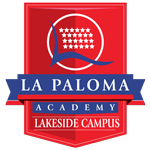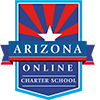Every year, on the fourth Thursday in November, we celebrate Thanksgiving. To students, it’s a well-deserved four-day weekend. To parents, it’s the kickoff of the holiday shopping season.
We know the day itself has something to do with pilgrims and Native Americans sharing a meal of thanks for all the food that was available thanks to the recent autumn harvest; food that would get the population through the winter. That, however, is only the beginning of a more complicated story.
How did we arrive at this wonderful celebration that includes a day-long feeding frenzy followed by several days of spectacular leftovers?
The fact is, long before Europeans arrived in North America, Native American tribes held harvest festivals to give thanks for the bountiful harvest, often involving communal meals and rituals.
In 1621, the event that is usually recognized as the first Thanksgiving occurred in November of that year at Plymouth Colony. The Pilgrims, who had settled in modern-day Massachusetts, invited the Wampanoag people to share in a harvest feast. This gathering lasted three days and included various foods such as venison, fowl, and corn. After the initial 1621 feast, Thanksgiving continued to be celebrated sporadically in the New England colonies as a way to express gratitude for a good harvest.
Throughout the 1600s and 1700s, different colonies celebrated Thanksgiving at different times of year. For instance, Massachusetts proclaimed a Thanksgiving Day every year following the original 1621 feast.
It wasn’t until 1789, when George Washington issued the first national Thanksgiving proclamation, that November 26 was designated as a day of thanks for the new nation. However, Thanksgiving was not yet an officially recognized holiday.
Decades after Washington’s proclamation, in the 1800s, writer Sarah Josepha Hale campaigned for a national Thanksgiving holiday, writing letters to numerous U.S. Presidents over many years. Her efforts contributed to increasing interest in celebrating Thanksgiving as a national event.
Finally, on October 3, 1863, President Abraham Lincoln proclaimed a national Thanksgiving Day. He suggested that the holiday be celebrated on the last Thursday in November, hoping it would be a day of unity during the Civil War.
It wasn’t until 1941 that Congress officially established Thanksgiving as the fourth Thursday in November, which not only made the date a little more standardized, but also often expanded the holiday shopping season by a week.
After World War II, Thanksgiving became characterized by various traditions, including family gatherings, turkey dinners, parades (like the Macy’s Thanksgiving Day Parade, which actually started in 1924), and football games. Each of these traditions reflects the holiday’s mix of cultural influences.
Today, Thanksgiving is a time for family and friends to come together, express gratitude, and share a meal. The merging of diverse traditions from different cultural backgrounds continues to shape how it is celebrated across the country.
This year, Thanksgiving will be celebrated on November 28, and while we give thanks for all that we have, we should all think about those who might have less to be thankful for than we do and to make plans for ways to help the less fortunate in the upcoming holiday season.


